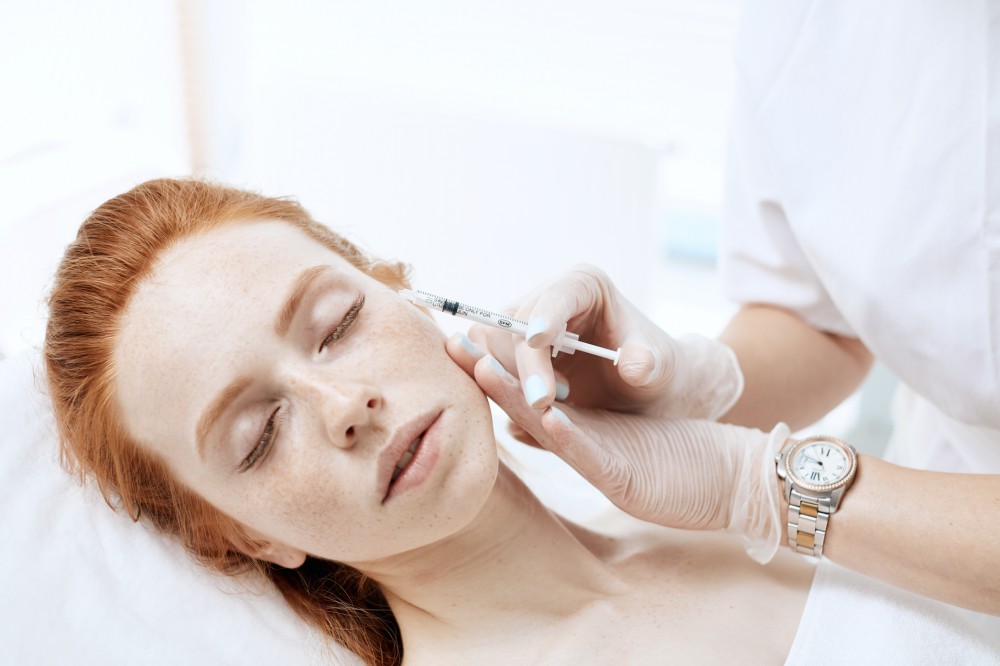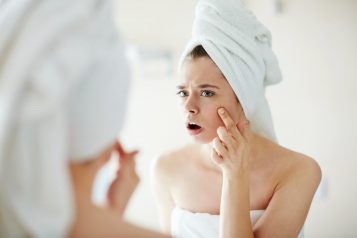
What is Botox®?
Botox® is a brand name of a toxin (botulinum toxin type A) produced by the bacterium Clostridium botulinum. It is an injectable that is used to temporarily eliminate or decrease wrinkles and facial fine lines.
What are the types of botulinum toxin type A?
The most commonly known types of botulinum toxin type A injections are Botox® (OnabotulinumtoxinA), Dysport® (AbobotulinumtoxinA), and Xeomin® (IncobotulinumtoxinA).
How does the botulinum toxin work?
The botulinum toxin blocks nerve signals to the muscles.
What are the FDA approved medical uses of Botox®?
The botulinum toxin can be used to treat numerous medical conditions. These include: urinary incontinence, muscle spasms of the neck, spasms of the eyelid muscles, lazy/crossed eye, excessive sweating, drooling, thyroid eye disease, Bell’s palsy, and chronic migraine.
What are the FDA approved cosmetic uses of Botox®?
Botox® is approved for crow’s feet and frown lines. Dysport® and Xeomin® are approved for frown lines. Other cosmetic uses of these products are considered “off label” though there are many “off label” current uses of the product.
How much does the botulinum toxin injection cost?
According to the American Society of Plastic Surgeons 2018 statistics, the average cost of botulinum toxin injections is $397, although this may vary depending on the amount used to address the patients’ concerns, amount that practitioners charge, and number of treated areas.
How is the botulinum toxin administered?
A small amount of the toxin is injected into specific muscles using a very thin needle. The number of injections is dependent on the patient’s facial features and extent of wrinkles. Treatment typically take 15 minutes or less for one-two areas.
Is there down time or recovery time after receiving botulinum toxin injections?
The simple answer is no. Patients may resume their normal activities. There may be an amount of local bruising or swelling of the area afterwards. There is also a time period of a few days when the injections take effect.
What are the potential side effects of botulinum toxin injections?
Bruising at the injection site, redness, headache, temporary facial weakness or drooping, nausea, flu-like symptoms. However, generally speaking the botulinum toxin injections are well tolerated.
What is Baby Botox?
Baby Botox, otherwise known as “mini Botox” entails injecting small doses of the toxin into the desired areas so as to elicit an effect without looking “frozen”.
What is the Botox Lip Flip?
Injecting Botox around the lips making them project outward, and giving the appearance of a more attractive pout or “lip lift”. Best results are seen when combined with fillers.
Can Botox give you a slimmer-looking facial profile?
Yes, potentially. These injections are approximately 15 to 30 units on either side of the face on the lower cheeks. It is a less expensive and less invasive alternative than a face-lift.
Can Botox be used to treat Acne?
There are studies that have a demonstrated that a single dose of Botox can reduce both pore size and oil production.
How is Botox used to treat excessive sweating?
Injecting Botox directly in the armpits, palms, soles, scalp and even the scrotum (scrotox).
How long do the results of treating excessive sweating with Botox last?
The effect is seen instantaneously, in under three minutes, and can typically last from four to six months.
Is treatment of excessive sweating using Botox covered by insurance?
Yes, it is typically covered by insurance. Out-of-pocket cost may be up to $1500 per session approximately.
What is “Blotox”?
This is an off-label use of Botox injected into the scalp to reduce scalp sweat. This in turn helps to reduce curling of the hair preserve a blowout.
How does Botox treat migraines?
Botox function as a road block preventing pain signals from reaching your brain. This will entail several shots of Botox around the head and neck region every12 weeks. In total, you may receive 30 to 40 shots. Results of this treatment could be felt as soon as 2 to 3 weeks later.
How does Botox treat TMJ/TMD?
TMJ/TMD (temporomandibular joint disorder), is pain that arises around the jaw from persistent grinding and clenching. Botox injected into the facial or neck muscles can help to reduce this pain. It can cost around $1000 to $1500 depending on dose and number of injections needed.
Can Botox improve the appearance of scars?
Objective assessment of the use of Botox for scar treatment suggests that it is worthwhile administering the injections prior to scar revision surgery, followed by Fractional C02 laser, and the use of scar reducing cream.
How does Botox reduce scar formation?
It decreases the tension on the wound edges by paralyzing the underlying muscles, thereby enhancing the appearance of resulting scar.
References:
American Society of Plastic Surgeons. Botulinum Toxin. Accessed May 17th, 2019. Available at https://www.plasticsurgery.org/cosmetic-procedures/botulinum-toxin
U.S. Food and Drug Administration. Botox Label – FDA. Accessed May 17th, 2019. Available at https://www.accessdata.fda.gov/drugsatfda_docs/label/2011/103000s5232lbl.pdf
Celletti EN. 7 Off-Label Uses for Botox Injections. Allure. Accessed May 20th, 2019. Available at https://www.allure.com/story/off-label-uses-for-botox-injections
WebMD Medical Reference. Botox Injections for Migraine Treatment. Accessed May 20th, 2019. Available at https://www.webmd.com/migraines-headaches/botox-migraines#1
Metzger C. Apparently, Botox Can Fix Your Acne, and Where Do We Sign up? Marie Claire. Accessed May 20th, 2019. Available at https://www.marieclaire.com/beauty/a13128465/botox-acne-treatment/
Auble K. I Had Botox Injections to Treat My TMJ Symptoms – and It Worked. Allure. Accessed May 20th, 2019. Available at https://www.allure.com/story/botox-injections-for-tmj
Freydkin D. Folks Are Getting Botox Injections to Preserve Their Blowouts. Allure. . Accessed May 20th, 2019. Available at https://www.allure.com/story/botox-blotox-for-blowouts
Shome, D., Khare, S., Kapoor, R. An Algorithm Using Botox Injections for Facial Scar Improvement in Fitzpatrick Type IV-VI Skin. Plast Reconstr Surg Glob Open2018;6:e1888.
Al-Qattan, M. M., Al-Shanawani, B. N., Alshomer, F. Botulinum toxin type A: implications in wound healing, facial cutaneous scarring, and cleft lip repair. Ann Saudi Med2013;33:482-488.
Ahmed Ibrahim, MD, PhD, Samuel J. Lin, MD, FACS
For more information, visit Dr. Brian A. Levine's social media:

























